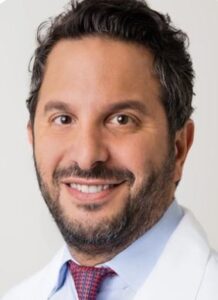
NEW YORK, NY, UNITED STATES, June 27, 2023/EINPresswire.com/ — The brain, like all the body’s organs, requires oxygen not just to function properly, but to survive. When brain cells are starved of oxygen they begin to die within a matter of minutes. When blood flow to, or within the brain, is blocked or severely disrupted, many brain cells can be deprived of oxygen all at once, causing a stroke.
“There are two main types of stroke. Ischemic strokes are caused by clots that restrict or block the flow of blood. Hemorrhagic strokes are caused by bleeds which can put enormous pressure on the brain,” said Dr. Robert Segal, cardiologist, and founder of Manhattan Cardiology.
“The important thing to remember is that minutes and even seconds count during a stroke. Know the signs, and if you or someone you know might be having a stroke, call 911 without delay,” Segal said.
The classical signs of stroke usually come on suddenly, and include:
· Numbness in the face, arm, or leg, and especially on just one side of the body
· Confusion
· Trouble speaking or understanding speech
· Dizziness
· Loss of balance or coordination
· Vision problems such as blurriness or double-vision
· Severe headache
If someone is suspected of having a stroke, it can be helpful to remember the acronym FAST:
Face: ask them to smile and look for droopiness on one side
Arms: ask them to raise their arms and see if one can’t stay elevated
Speech: ask them to recite their name and address and listen for slurring or unusual speech
Time: dial 911 immediately if any of these symptoms were observed
When someone is having a stroke, they should never attempt to drive themselves to the hospital. Additionally, they should not get a ride to the hospital either. Instead, 911 should be called so an ambulance can transport them to the hospital. This way, the paramedics can begin urgent medical interventions on the way, saving precious time.
“There’s also something called a transient ischemic attack. It’s sometimes called a TIA, a mini-stroke, or a warning stroke. These are caused by smaller clots that dislodge themselves after a few minutes. These should be treated with the same seriousness and urgency as a stroke with a call to 911 right away,” said Segal.
The symptoms of a TIA and a stroke are identical, and it’s common for people who’ve experienced a TIA to go on to have a stroke in the following months or year. Fast medical intervention could help to prevent a future stroke.
“There’s certainly a benefit to understanding the risk factors of having a stroke. Having an awareness of a family history of stroke for example can keep it more top-of-mind in the event that the symptoms of stroke start presenting. But more than that, some risk factors are behaviors that can be changed to then lower a person’s overall stroke risk profile,” said Segal.
Risk factors of stroke include:
· Age: anyone can have a stroke, but risk goes up in later adulthood
· Sex: women are more likely to have strokes than men
· Race: African Americans are more likely to have strokes than other racial groups
· Having already had a previous stroke or TIA
· Family history of stroke
· Sickle cell disease
· Heart disease or heart disorders
· Diabetes
· High blood pressure
· High cholesterol
· Smoking
· Alcohol consumption
· Obesity
· Physical inactivity
· Diet high in saturated fat, trans fat, cholesterol, or sodium
“Lowering the risk of having a stroke isn’t always easy, but it’s also not complicated. Maintaining a healthy diet and a healthy weight with regular exercise is a great place to start. Avoid smoking and limit alcohol use. Beyond that, it’s encouraged to go to annual checkups and stay on any prescriptive medications to help control blood pressure, cholesterol, or other risk factors,” said Segal.
When someone has a stroke, medical professionals will intervene as soon as possible. Oftentimes medication will be the first approach, but surgeries or other special treatments may be needed as well.
After someone has had a stroke, they’re at greater risk for another.
Because at least some brain cells were likely destroyed or damaged, rehabilitation is frequently needed. Rehabilitation will usually start within the first days after having a stroke. Depending on the severity of the stroke and how rapidly medical attention was administered, rehabilitation could continue for weeks to years, and a complete recovery is achieved only some of the time.
“After someone has had a stroke, they can expect not only specialized interventions such as occupational therapy, but also medications to prevent future strokes as well as treatments for emotional effects such as depression. Having a stroke is a major challenge in someone’s life. My advice would be to do what you can to prevent it, and don’t wait even a minute to call 911 if someone might be having a stroke,” said Segal.
Manhattan Cardiology is the premier facility for preventive cardiology in New York. Our cardiologists practice under the guiding principle that early detection is the best form of prevention. www.manhattancardiology.com
Dr. Robert Segal is a board-certified cardiologist and the founder of Manhattan Cardiology, Medical Offices of Manhattan and co-founder of LabFinder. www.manhattancardiology.com www.medicalofficesofmanhattan.com www.LabFinder.com
